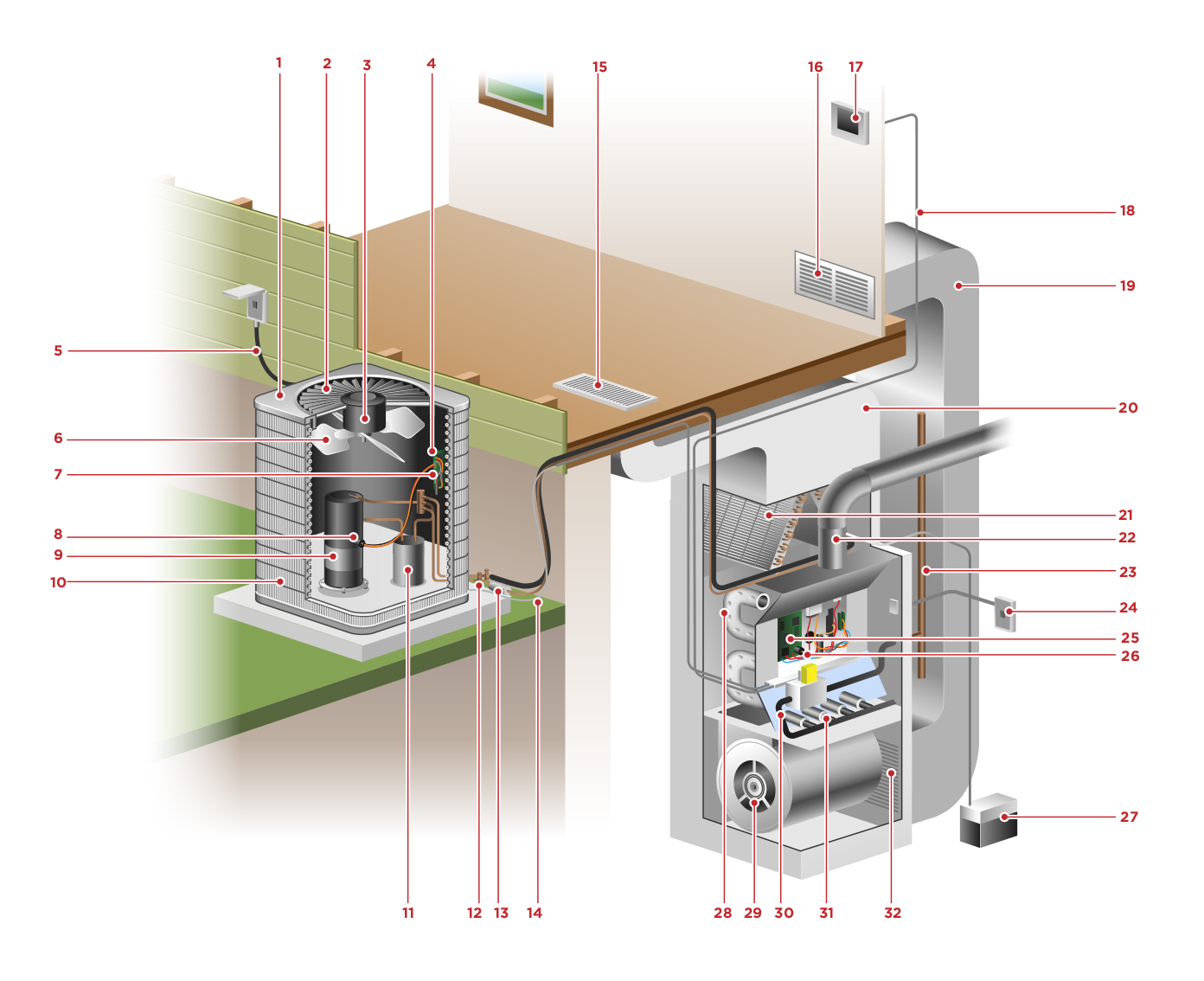How Does a Central Air Conditioner Work?

You just set the thermostat and your house cools down. But what makes it all work? Having a good idea how the components in your HVAC system work helps you to make good decisions when you need to repair or replace something.
The latest equipment has computer controls, high efficiency, and variable speed technology but the basic principles that make the air-conditioning work are unchanged since it was invented in 1902 by Willis Carrier. So how does it work?
At it’s core, air-conditioning works by the same principle that makes a propane tank cold as the propane is used when you’re operating a gas grill. There are several principles in play that get quite complicated, but the oversimplified principle is that gasses heat up when compressed and expand when pressure is released. Learn more in a detailed account of the physics involved.
- The compressor (9) constricts the refrigerant vapor, raising its pressure, and pushes it through the coils (10) on the outside of the condensing unit. As the hot gas in the coils is cooled it becomes a liquid (still in compressed form).
- Now in liquid form at high pressure, the refrigerant travels through the small copper line (12) toward the evaporator coil (21) inside your home. When the refrigerant reaches the evaporator coil it is expanded through a metering device (fixed orifice or TXV). When the gas expands it cools down.
- As the refrigerant flows through the evaporator coil it absorbs the heat from your home that is circulated by the blower (29).
- Last, the refrigerant evaporates to a gas, then flows back to the compressor through the larger copper line, where the cycle starts all over.
The graphic below is a simplified version of the refrigeration cycle.




